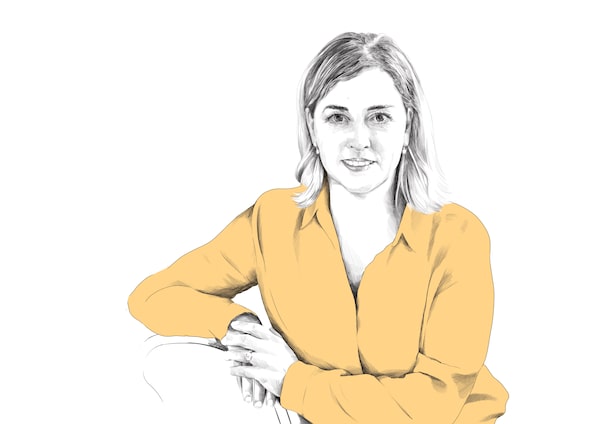
Rebecca Strickson/The Globe and Mail
Jody Kuzenko – Torex Gold Resources Inc.
“Let’s be honest: Mining has been a super-sexist industry. But 30% of our board, 40% of our executive team and half of our corporate office staff are women. We didn’t set out to do that. We set out to hire the best and the brightest—people who come at things with different perspectives.
That’s why companies need to hire for competence and capability and curiosity, instead of from ‘the club.’ That’s what we’re doing at our mine in Guerrero, Mexico. Right now, we have 16% female representation. But there’s a major opportunity there. The play for an organization like ours is to work on getting female leadership in the production area, in the operation area—at the front end of the pipeline. Give me some truck drivers, operators, maintenance people, because that’s where our next supervisors and managers are. It’ll take a bit longer, but they’ll be so much more ready and effective by the time they get there.
I would also say you’ve got to find some heroes. In our case, we found two. One is a truck driver named Estella, who took the job, loved it, raised her two young daughters, and now she tells other young women in the community, ‘You need to be a truck driver at this company.’ Our other hero is a trainer named Jonathan. He took it upon himself to work with these women and say, ‘No, you belong here. I want you to be here.’ Now, about 20% of our haul truck drivers on-site are women. That’s what I mean when I talk about filling the pipeline from that end. There are lots of women in mining who work in finance and HR, but the credible jobs are the ones that touch the metal and the money—the operations. So, my goal is always to get young women into those jobs, because those are the future leaders of mining companies.”
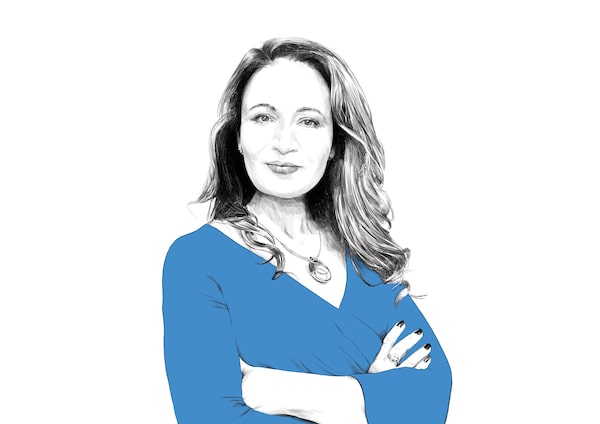
Rebecca Strickson/The Globe and Mail
Anne Fandozzi – Ritchie Bros. Auctioneers
“I’m an engineer by training—bachelor and master’s—and that’s a fairly male-dominated field, still. The industries I keep getting attracted to are also male-dominated. I got my MBA, and I spent 11 years in automotive, at Ford and Chrysler. Then I did a ride-sharing startup. The last company I was CEO of was in collision repair. And now Ritchie Bros.
It is an incredible company. That said, there’s a lot of work to be done. Even on the gender side, we know we have a long way to go. The work around gender diversity started a long time ago. Canada was very much focused on this issue at the board level and took it much more seriously than other countries did. Our long-time chair is female—Beverley Briscoe. When my predecessor, Ravi Saligram, came in, he took gender diversity very seriously. He recruited our CFO, Sharon Driscoll, and appointed Kari Taylor as president of U.S. sales. And as I build out the management team, we’ve added more women. But if you look down in the organization, as in any male-dominated field, there are gaps. So we have a long way to go.
Last year, when the Black Lives Matter movement gained momentum, we had conversations about why we were going to prioritize diversity. And we formed a 100-person volunteer Black Lives Matter Employee Resource Group, who I give so much credit for driving this forward. We just had Black History Month, and it kicked off with an incredible learning session. I used it as a rallying cry to say, ‘Look, we started on the journey of gender a couple years ago. Now we’re celebrating cultural diversity.’
We are not yet at the measurement stage, candidly, because our internal people systems are not great. They need a spiffing up. So right now, it’s more igniting people’s passion and understanding of what’s right. Asking that interview slates be diverse in nature—doing the basic blocking and tackling, if you will. For me as a woman, as an immigrant, it’s second nature. It’s critical. The Black Lives Matter movement hit me, even though I’m a white woman, very personally, very deeply. As Jews, we were political refugees when we left Russia. The idea that sections of the population are not treated as others are—it spoke to me on a personal level.
I try to give back where I can. I volunteer as a mentor with a program called Signature, aimed at women leaders one rung below the C-suite attempting to break through the glass ceiling. A woman reached out to me recently because she’s considering a career change. She’s looking at this opportunity, and she’s perfect for it. But she’s like, ‘I don’t know—I feel like maybe I should take a class.’ I said to her, ‘This is a classic gendered approach. You don’t even realize it’s happening. You are perfect for this job.’ So how do you break through?
And men have their blinders on. We all have these biases that we bring forward. Only by talking about them can we bring them out of the shadows.”
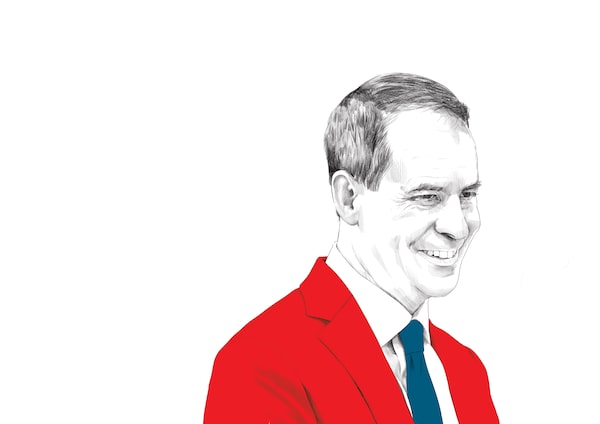
Rebecca Strickson/The Globe and Mail
Darryl White – Bank of Montreal
“I think we should recognize that progress on diversity and inclusion is being made. The point I’m trying to make is it’s just not fast enough. How do we get there? By setting targets and measuring results.
Let’s start in the early 1990s, when one of my predecessors, Tony Comper, established a task force on the advancement of women at the bank. That was a big deal. Then, in 2012, I think we were the first to set the goal of 40% women in leadership roles by 2016. One of the things I found really important is that we didn’t say 40% one day. We said we’d have 40% women in senior leadership roles by 2016—and we achieved that goal. Otherwise, you can always make excuses for why it’ll be next year, next year, next year.
In 2017, we set what we called our Vision 2020 Diversity Strategy—to have 40% to 60% representation of women in senior leadership. By the end of 2020, it was 41.1%. Now, 45% of my direct reports are women, including the heads of two of our four operating groups, and 45% of the board. Where are we going tomorrow? I think gender parity and inclusion will continue to be a focus through our Zero Barriers to Inclusion strategy, which includes a lot of other, more granular rules on the topic of intersectionality. We talk about representation of Black, Indigenous, people of colour, Latino and LGBTQ+ employees, and we set specific objectives for each. In some cases, they are nowhere near where they need to be. In other cases, we’re doing pretty well.
I’ve had conversations with companies that are stymied by diversity and inclusion. We don’t pretend to have the answers for everybody. But I’ll give you one example: If your head of human resources is the spokesperson for an ideal we may or may not achieve, then what you’ve got is an HR project. We have a performance committee—the 50 most senior leaders at the bank—that meets every quarter. There was a moment a few years ago when I looked at our scorecard and said, ‘Wait a minute—it doesn’t have anything on equity, diversity or inclusion. If this is really a business priority, it has to show up here, too, not just in our purpose statement and not just in the narrative of the chief HR officer.’ All of a sudden, people one, two, three levels down are saying, ‘This is serious.’ Not all of those reports are beautiful. But they’re specific and transparent.
We’re a signatory to the Black-North Initiative. I think the work they’re doing is really important, in part because there’s so much to do on the awareness side. But here, we’re saying awareness isn’t anywhere near good enough. We need to actually raise the bar to accountability.
As for mandated quotas, I think the problem with regulation is that reporting can end up being more important than actually getting the culture and performance right. And I think you’ll effectively get a minimum bar. I think it’s more important to let people aim higher and not let the ethos become, ‘We do this because we have a regulatory requirement to get over.’
I also don’t find finger-wagging to be particularly inspiring. I tend to go back to the science, and remind people that diverse teams are stronger teams and produce better results. We can prove that in our organization. We can prove that in other organizations. It’s not just the right thing to do—it actually produces better outcomes. Without question.
And it’s important to recognize progress, and to recognize that progress is not yet good enough. Otherwise, you get companies saying, ‘Gee, this is just too big of a hill to climb, and all I can see is failure. So why bother trying?’ That’s not very inspirational. Instead, recognize the progress you’ve made, then ask: Why isn’t it good enough? What can we do differently? If you don’t do that, you’re probably not going to get better at it. Which is, of course, the objective for all of us.”
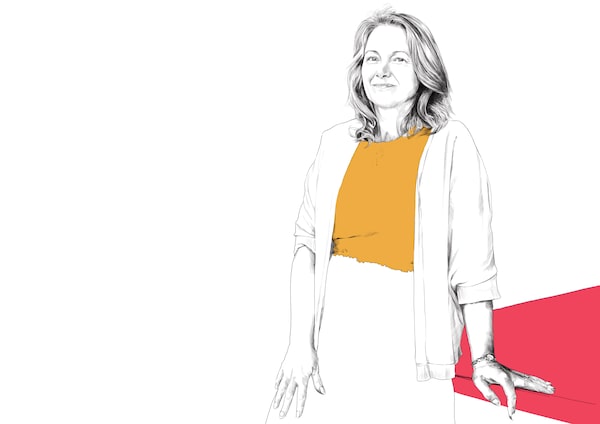
Rebecca Strickson/The Globe and Mail
Marie Inkster – Lundin Mining
“Mining has a reputation for being an old, antiquated industry, but for most of my time at Lundin, the head office has had lots of women. Maybe that’s from our Swedish roots—because in Sweden, even the mines have 20% women. But our inclusion policy never had targets before, and last year we asked, why don’t we? Now we’re introducing a target of 30% women on the board. We just added Karen Poniachik, who used to be Chile’s minister of mining.
In the mines, many people are trying to improve their gender ratios, so there’s a lot of competition to hire women with technical backgrounds. We have training programs and workshops, for example, in heavy trucking licensing, and we encourage women to enrol so that when positions open, they have the qualifications to apply. In some locations, there’s not a lot of turnover, so when you do have an opportunity, you have to take advantage. We make sure people know we’re open to hiring women, that we want women.
You not only have to hire new women, but you also have to keep the ones you have. We try to offer flexible work arrangements that are supportive of women and parents. Sometimes it’s the basic things: If you’re in an underground work environment, you need facilities. There has to be enough bathrooms. And zero tolerance for discrimination or harassment—everyone says they have that, but not everyone follows through. We won’t tolerate it.
We want women to see that if you work hard at Lundin Mining, you can achieve the highest office in the company. If you can see it, you can be it.”
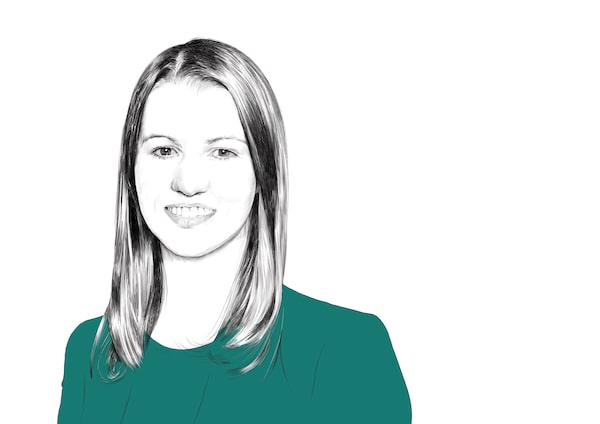
Rebecca Strickson/The Globe and Mail
Meghan Roach – Roots
“I spent the bulk of my career in private equity, and it was a struggle to find role models. I have two young daughters, and it’s very difficult to find your career path if you don’t have someone to look up to and think, How did they get there?
Before I got to Roots, the C-suite was 75% male. Now, 75% of our management team are women. It’s nice to be part of a brand where your team is reflective of the customer base. We still have a lot of work to do, but we’re trying to lean into it and go beyond gender. We have a Diversity, Equality, Equity and Inclusion Council that includes not only me and other senior leaders, but also people from our stores and distribution centre. So it’s made up of employees from very different backgrounds and places in the company, and that brings this new and different decision-making to the table.
When roles come open, we’re trying to level the playing field in terms of hiring by using case studies. At many companies, the interview process is personality-driven—chatting with a candidate to make sure they fit from a cultural perspective. The real question is, can they do the job? Case studies put everyone on an equal footing. So if I’m hiring somebody for finance, I might ask them to look at my financial statements or analyst reports and give me feedback on how they might do things differently. You’re really focusing on what they can do, as opposed to potentially focusing on what school they went to or who they know. People have to make an effort to think about their own limitations and the limitations of their network. Do I have people within my network who are diverse from a gender perspective, from a racial perspective? If you don’t, you should really be looking at working with some of the agencies and companies that are focused on helping you find them.
Many of my top executives have kids. So during the pandemic, we’re trying to give people the flexibility to balance their lives and their work. It’s respected if you can’t take a call because you have to pick up your kids or pause because your child needs help with school. We’re all struggling with the same issues. And we owe it to other people to show that it’s okay to say you’re not okay.
I won’t pretend I have all the solutions, but I think the more we make it a normal part of the conversation, the more great ideas will come up.”
Your time is valuable. Have the Top Business Headlines newsletter conveniently delivered to your inbox in the morning or evening. Sign up today.